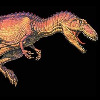HOME | DD
 Franoys — Jurassic World Evolution Dinosaurs chart.
Franoys — Jurassic World Evolution Dinosaurs chart.

#aegyptiacus #altus #animals #antirrhopus #baryonyx #build #building #carnivores #carolinii #ceratosaurus #chart #comparison #deinonychus #dilophosaurus #dinosauria #dinosaurs #edmontosaurus #evolution #extint #fauna #fragilis #gallimimus #game #genesis #giganotosaurus #herbivorous #horridus #human #jurasic #length #majungasaurus #mass #mongoliensis #nasicornis #operation #paleontology #park #parkeri #pc #pentaceratops #playstation #predatory #rex #scale #size #spinosaurus #struthiomimus #triceratops #tycoon #tyrannosaurus #velociraptor #wetherilli #world #xbox #zoo #asiaticus #regalis #paleozoology #metriacanthosaurus #crenatissimus #sternbergii #crichtonpelta #tsitaosaurus #arcaheornithomimus
Published: 2018-09-10 19:55:41 +0000 UTC; Views: 118903; Favourites: 498; Downloads: 515
Redirect to original
Description
I have had this on my computer for a long time but somehow didn't find the time for the upload. Anyway, here are all the dinosaurs in the recently released Jurassic World Evolution game, a tycoon similator in which you attempt to create your own Jurassic world. One thing that every paleo enthusiast will notice is that the scaling and the vital statistics of the dinosaurs feel very rushed and not very throughly studied. Sometimes it feels like they are picked from the highest estimate posible listed in english wikipedia, and other times they feel outright made up.For example the mass estimate for Tyrannosaurus is 18 t ; that estimate is obtained from a grotesquely obese model from Hutchinson et al 2011; and one can't seriously argue the maximum model is as likely as the minimum for a healthy predator. The Giganotosaurus and Spinosaurus masses (14 and 21 t) were obtained in a very questionable manner from an allometric regression that plots skull legnth vs body mass, without considering the proportions of the postcrania (the regression of Therrein and Hendersson 2007 had many values plotted wrong as well), and some animals like Pentaceratops, Camarasaurus, or Mamenchisaurus are ridiculously oversized when compared to the real specimens.
The proportions of many of the animals are not based on rigorous skeletal reconstructions; and have proportions very different from the real life counterparts. This is specially true of the dinosaurs that have appeared in the films. For example, the ceratopsians have their manuses and feet based on rhinoceros rather than in ceratopsian fossils and the sauropods have clawed hands, the ankylosaurus has rows of spikes in the lateral surfaces of the torso and too long legs, the Deinonychus a head restored wrong and not after it's closest relatives like Velociratpor; between a really long etcetera (like the theropods having totally pronated hands, and ornithomimids and dromaeosaurids lacking feathering).
Here I tried to base each animal on rigorous skeletal reconstructions made after the fossils; made by , Greg Paul, , and myself. They are scaled to the measurements of the largest specimens I have been able to find across the published scientific literature. The masses were obtained from volumetric models from mass studies, and from GDIs done on the skeletals used as reference. A few of them were scaled from closely related animals with similar body plans.
Update 31/12/2018: Added Stenonychosaurus (=Troodon), Dreadnoughtus, Iguanodon, Olorotitan, Carcharodontosaurus. Updated the Allosaurus, Carnotaurus, Diplodocus and Camarasaurus.
Credits:
Skeletals of Velociraptor, Deinonychus, Gallimimus, Dilophosaurus, Ceratosaurus, Styracosaurus, Maiasaura, Iguanodon, Parasaurolophus, Edmontosaurus, Kentrosaurus, Huayangosaurus, Stegosaurus, Apatosaurus, and Brachiosaurus by .
Skeletals of Struthiomimus , Chasmosaurus, Pentaceratops, Triceratops, Corythosaurus, Tsintaosaurus, Pachycephalosaurus, Giantspinosaurus, Sauropelta, and Olorotitan by Gregory S.Paul, from the Priceton Field Guide to Dinosaurs 2016.
Skeletals of Sinoceratops and Nodosaurus by .
Skeletal of Mutaburrasaurus by
Skeletal of Mamenchisaurus, Gobivenator, Camarasaurus, Carnotaurus and Dreadnoughtus by
Polacanthus schematic by
Chungkingosaurus schematic by
Crichtonpelta schematic by
The rest of the skeletals have been produced by myself (Allosaurus, Majungasaurus, Suchomimus, Giganotosaurus, Carcharodontosaurus, Tyrannosaurus, Spinosaurus, Diplodocus)
The list of references is extremely huge for me to post, but you can ask about them in the comments.
Related content
Comments: 182

👍: 2 ⏩: 0

👍: 2 ⏩: 0

👍: 2 ⏩: 0

👍: 1 ⏩: 0

👍: 0 ⏩: 1

👍: 1 ⏩: 0

👍: 3 ⏩: 0

👍: 1 ⏩: 0

👍: 2 ⏩: 1

👍: 1 ⏩: 0

👍: 0 ⏩: 0

👍: 0 ⏩: 0

👍: 0 ⏩: 0

Hey! They have New Dinosaurs in the Game like Nasutoceratops, Nigersaurus and Dryosaurus.
you might wanna update the list.
👍: 0 ⏩: 0

👍: 2 ⏩: 3

👍: 1 ⏩: 1

👍: 0 ⏩: 0

👍: 2 ⏩: 0

👍: 1 ⏩: 1

👍: 1 ⏩: 1

👍: 0 ⏩: 0

👍: 2 ⏩: 0

👍: 1 ⏩: 0

👍: 2 ⏩: 0

👍: 2 ⏩: 0

I really wish I could raise a small population of every extinct animal in a wildlife sanctuary.
👍: 0 ⏩: 0

Triceratops is wrong in weight.
The largest triceratops weigh 12 tons.
By the way, the 8.3m triceratop weighs 7.8 tons?
This is wrong.
👍: 1 ⏩: 2

Imagine thinking you know more than Franoys when it comes to dinosaur mass estimates
👍: 2 ⏩: 0

Right I am pretty sure Franoys has already spoken to you regarding you constantly posting that his work is wrong so at this point you are either being ignorant or just trolling. You keep stating his work is wrong okay where is your evidence to support your claims ? if you are still going from the outdated estimates on Wikipedia then that is your own problem a ton of the information on Wiki is outdated and needs looking at this has been said to you many times and has been explained in good detail before but here you are once again so either back up your claims with up to date info or find a better hobby.
👍: 1 ⏩: 0

👍: 0 ⏩: 0

youtube.com/watch?v=w9hqOXmNl9…
New dinosaurs: Acrocanthosaurus, Herrerasaurus and Proceratosaurus
👍: 2 ⏩: 0

Is that the largest known Triceratops specimen?
👍: 0 ⏩: 1

If the estimates are correct, yes
👍: 0 ⏩: 1

Is Eotriceratops still considered to be larger?
👍: 1 ⏩: 2

👍: 0 ⏩: 0

People allways take Sue as tipical T-Rex figure making it biggest than almost all the specimens of other theropods...
But making an average size using all the adult specimens of T-rex we get arround 11.5-11.8 metres and maybe 6-6.5 tons ( I think all the figures are overstimated, the ranges for Sue are crazy from, 5.6 to 10-14 or more tons.... I think Hartman's 8.400kg mass for Sue it's "good", despite all dinosaurs could weight less than the estimations suggest IMO).
About MUCPv-95, many people allways say that would be an animal with the same size than the holotype but just with a bit bigger dentary/skull... Why not belongs to a bigger animal with smaller skull? XDD. It's fair to use the average difference between those bones to make a linear scale up (as Hartman did). And as far as I know 6,5% bigger is that, bigger. Tell me if I'm wrong. Giganotosaurus is LONGER than T-rex in average, and MUCPv-95 similar in total mass to Sue if you scale that 6,5% extra size. So in 2d charts like this, should appear bigger than Rexy, even if you use Sue.
Notice that we have those two Giga specimens and both are clearly over 12 metres.... How many T-rex individuals between all the adults remains we have, are over 12 metres? I think charts like this are educational, so I think we have to do them as impartial as we can.
It's curious that, depending on the author, different familys or genus get different estimations... We always need more remains I guess... The more proofs, the more objectivity.
👍: 3 ⏩: 3

You adress lots of points so I'll try to cover everything.
" making an average size using all the adult specimens of T-rex we get arround 11.5-11.8 metres and maybe 6-6.5 tons "
According to the estimates I've produced (using computational and mathematical methods, the best method to make things as impartial as posible is using scientific methodlogy and not making use of guesses) Tyrannosaurus specimens in that range trend to weigh between 7 and 8 t, coherent with the results found in Bates et al 2008 and Hutchinson et al 2011 as well as Sellers et al 2017, the discrepancy is not too massive even, it could vary a bit but masses like that would require a high pneumatization of the body and very little muscular tissue.
"I think Hartman's 8.400kg mass for Sue it's "good", despite all dinosaurs could weight less than the estimations suggest IMO)."
Each estimation is it's own entity, very often produced with different methodology, therefore you can't go into generalizations and it is better to analyze each matter independently. The mass of dinosaurs is sometimes overestimated and sometimes it isn't, sometimes it is underestimated in fact, it depends on the specimen taxon and method used. In any case there are other estimations for Sue of course, some lower, some very similar (like the 8.8 t I got with basically a more exact version of the method he used) and some higher;like some Hartman himself has published along with other authors in 2019.
"About MUCPv-95, many people allways say that would be an animal with the same size than the holotype but just with a bit bigger dentary/skull... Why not belongs to a bigger animal with smaller skull? XDD. It's fair to use the average difference between those bones to make a linear scale up (as Hartman did). And as far as I know 6,5% bigger is that, bigger. Tell me if I'm wrong. "
Sometimes things are not that simple. According to my experience and some statistical models, the dentary depth varies as much as a 20% in theropod individuals with similar femoral length (10-20% depending on the taxon), which is a better predictor for size than the size of the very variable skull bones. This means that if the difference falls below that then we can't assure anything. (not make a conclusive decission wether the individual is smaller, bigger or equal). As far as the percentage goes, the discrepancy between the dentary depths at the 8th alveolus, which is the only comparative measurement published for both dentariess, is only a 2.2% (138 mm vs 135), and not a 6.5%, as reflected in Coria and Currie 2006. Considering this it is a much more reliable option to use the holotype, which is a 60% complete skeleton, to represent the taxon. It is not really a matter of subjetivity.
Notice that we have those two Giga specimens and both are clearly over 12 metres.... How many T-rex individuals between all the adults remains we have, are over 12 metres? I think charts like this are educational, so I think we have to do them as impartial as we can.
Most Tyrannosaurus specimens are poorly reported in the scientific literature, so sizes over or under 12 m for many of the partial or non described specimens are completely up in the air. Only 4 adults have scanned skeletons. And even then, the length of a mounted skeleton can vary depending on the amount of intervertebral spacing, or in the case of Tyrannosaurus, how you restore the tip of the tail, which isn't preserved in any specimen so far. To add to this Giganotosaurus isn't described in detail yet, we can work with some photographs and some scarce information to try to predict it's size the best we can but it is not yet completely clear. However, the mounted skeleton has been reported to be 12.2 m long in Carpenter & Currie 2000 and in Coria and Currie 2006. Perhaps one we get extra information it could end up being reconstructed a bit longer or a bit shorter. We shall see.
It's curious that, depending on the author, different familys or genus get different estimations... We always need more remains I guess... The more proofs, the more objectivity.
Sometimes it is not a matter of scarcity of remains, the lack of information is very often due to the remains that exist not being described or well documented, like the Giganotosaurus case I mentioned above. However, most changes regarding mass estimations are due to the differences in the methodology used to calculate the mass; but that is a complex matter that would take very long to discuss further and for which I could write a whole publication and this response is alredy massive.
I hope the answers were satisfactory
👍: 2 ⏩: 0

What makes you think that Giga was taller than T-Rex when the biggest specimen of Giga we can use as a credible skeleton is 3.53 meters tall at the hips. While Sue is 3.73 meters tall at the hips. Not to mention T-Rex had a slightly different posture being that their head was a little bit taller in comparison to their hips than for example Giga and Carcharodontosaurus. Stan the Rex specimen who was 12.04 meters long 40 centimeters shorter than the biggest Giga, was still 11cm taller at the hips and weighed almost 1 full ton more. T-Rex was just the bigger animal all around.
👍: 1 ⏩: 0

There are a few Tyrannosaurus specimens that are Sue sized though take Scotty for example that is 12.1 meters long Tyrannosaurus rex skeletal reconstructions. there is also Trix that is also around 12 meters long and is very similar to Sue in proportions en.wikipedia.org/wiki/Trix_(di… there is also the specimen Tristan that is also around 12 meters long. The whole Sue being a really big freak specimen is not really the case its just something some people say to try downplay the size of Tyrannosaurus there are a few fragmentary specimens that are estimated to be similar to Sue also The Largest Specimens of Tyrannosaurus rex . Franoys uses Sue and the Giga holotype because they are the better preserved specimens and are more reliable to use.
Right now with the fossil evidence we have right now there is no giant theropod that is more massive than Tyrannosaurus its not about length really its about mass if you view Tyrannosaurus from the top view or the front you will see how much more robustly built it is its much wider even the shorter specimens that are around 11.5 or 11.8 meters long are still estimated to out weigh the other giant theropods such as Giganotosaurus this link explains it all quite well it has plenty of pictures and comparisons between the big theropods and it shows how T.rex is from the front side and top views qr.ae/TUGH5D and when it comes to averages well we cant really say what the average size for any of the big theropods because our sample size is to small for all of them we just have more specimens for Tyrannosaurus. This could all change in the future with more evidence but this is the situation right now. Hopefully Franoys can get back to you concerning the weights he can explain it better than i can.
👍: 1 ⏩: 1

I was talking about the lateral view only. We all know how bulky was the T-Rex compared to the others... Anyway let me choose the Hartman's estimations as more accurate (none is perfect).
There are more than 30 adult T-rex specimens if i'm not wrong. Sure 3 or 4 are arround 12 metres or more, and yes, a lot of them are poor level of conservation. But if you take the average lenght is other thing. It's under 12 metres. And you know that Sue represents a very bulky morphotype, so, direct comparisons using Sue as example are not the best ones.... IMO.
This kind of charts are used by all the people, with or without real knowledge about the remains of those species. So, you allways read the same things. It's just my opinion, but charts like this would be better with average sizes from the adult individuals.
I've been reading, searching, measuring, and studying articles, papers, technical pdfs, bones, etc by myself during two decades (loving dinosaurs during more than three) so I think I can understand hehehe. It's just an opinion, and basically about how, not about what. There are a noticeable margin of error in the CGI calculations anyway (It's more about a general problem, not about the species comparison itself).
I've my own diagrams, recopilations, reconstructions... just I don't have time to do them for the people like these artist do. But just take a look about all the disagreements between the experts (paleontologists basically, we can include paleoartist if you want) you can find. So, don't give 100% certainty to nobody. Fosils battle will never end XD.
Summarizing, for me the evidence about T-Rex and Giga is that the secod one was longer and taller in average. T-rex was heavier, stronger, etc. So the point is, how do you should put them in a 2d chart? I don't know, But for example I will go for Stan as average sized T-Rex if I'm using Giga's holotype and specialy if I'm asuming that the other remais are not from a bigger individual (just suppositions). I allways see Sue everywhere as the most representative figure, and normally I don't see the "biggest" individuals for other dinosaurs, or I see very conservative estimations (this is not a bad thing in paleontology). Is just that.
Greetings
👍: 0 ⏩: 1

Franoys can explain all of this to you better than i can here is a quote from him when it comes to the size of Sue "About Tyrannosaurus and the size of FMNH PR 2081(sue) being exceptional, at least 7 specimens are comparable to her in measurements, some of them pretty complete, like Trix, Scotty, UCMP 118742
, UCMP , RTMP 81.12.1, and potentially C-rex and F-rex. There are reports of vertebrae bigger than those of her although when they are not formally described, the posibility still exists.
Sue is less that 4% bigger than CM 9380, so yeah it is not a lot bigger than most of Tyrannosaurus specimens. There are a lot of specimens that have bone measurements between those of CM 9380 and Sue, and therefore a lot of specimens that Sue only outsizes by less than a 3%. Those being: BHI 4182, Samson, LACM 23844, SDSM 12047, AMNH 5866, King Kong, Tristan, MOR 008, and G-rex.
There are also specimens comparable to CM 9380 in size, so specimens that sue outsizes by about a 5%, or not much more than that, AMNH 5027, MOR 980, MOR 555, BHI 3033.
So far all of the above are over 11.5 m in length except perhaps Stan although that is not certain.
Finally you would have the specimens that are really significantly smaller and adults which would be Black beauty, B-rex, "Wyrex, BHI 6232, BHI 6233 and BHI 6242", (I haven't been able to confirm if the last 4 ones are adults). All of theese would have body lengths of about 10.5-11.5 m depending on which bone you use to scale down from Sue or what metric. In some of those cases such as B-rex scaling by femoral circumference yields a higher result so perhaps they were more robust than Sue despite being smaller. So if anything this part of the sample would be the one that is 11 m in average, not all of it. Therefore an average of 11 m for adult specimens is implausible.
And therefore, mixing all of T.rex from all time periods, horizons, sexes, ontogenic stages, populations, etc, would probably give us a range of about 11.5-12 m in average for the confirmed adults of the species. Asuming it is 11.75 m, then the average mass would be 7.6 t based on this GDI, which we can leave as 7-8 t accounting for possible differences in robusticy, as some of the specimens could be more proportionally robust than Sue (some have bigger circumference/femoral length ratios) and some could be proportionally less robust.
The rest of the specimens, while do exist, have no reported measurements or even a rough size estimation so determining how much bigger than them Sue is implausible. Some of them don't even have a catalog number.
Scott Hartman however, makes excellent arguments on how this is always a matter of individuals and not really species, because all of them are represented poorly to make a reliable average, even Tyrannosaurus, and furthermore, some species have way more specimens preserved than the others (and also more complete ones) so the comparison is often not fair."
You said we always use Sue but not the largest specimens for other animals well once again we use the holotype for Giga because its more reliable we cant use (MUCPv-95) because its just a jaw fragment and many people around here dont really think it is much larger than the holotype but we cant be sure why ? because its just a jaw fragment we have no clue how big this animal was when it was alive. In every animal we see variation this big jaw could of belonged to a bigger animal or it could just have belonged to an animal that had a big jaw or a big head we dont know because we dont have anything else for this specimen. Many individuals of Tyrannosaurus show variation in how they look.Take a look at Stan Tyrannosaurus rex skeletal diagram (BHI 3033) then look at Sue or Scotty they all look different look at these Tarbosaurus specimens Tarbosaurus bataar adults skeletal diagrams we really dont know how large (MUCPv-95 was or what its proportions are thats why we dont use it as much. The Spinosaurus used on this chart is the largest specimen for the genus and the carcharodontosaurus specimen used here is also the largest specimen we have for its genus. More people use Sue to represent Tyrannosaurus because its a very well-preserved specimen and going from the evidence we have does not show a freak specimen just an animal that lived longer than the other individuals Sue might represent just a fully grown Tyrannosaurus,
then we also have Scotty who was around 30 years old when it died and is very comparable to Sue and then we have Trix who was also around 30 when it died and is also very similar sized to sue it does seem that these individuals show the size of fully grown normal tyrannosaurus. So if you want to create a chart well its your own chart so you go from your own ideas and you create what you want to create you can use what ever specimens you want in your chart but i do think its a good idea to use more reliable specimens but once again its your own chart you can do whatever you want.
👍: 0 ⏩: 0

I always thought Triceratops outgrew Tyrannosaurus Rex in terms of mass for some reason. So... what was Triceratopses defence mechanism? Was is faster or more agile than a Tyrannosaurus? Or was it the cretaceous equivalent of a porcupine, killing the apex predator more often than not?
👍: 0 ⏩: 2

👍: 0 ⏩: 0
| Next =>
























